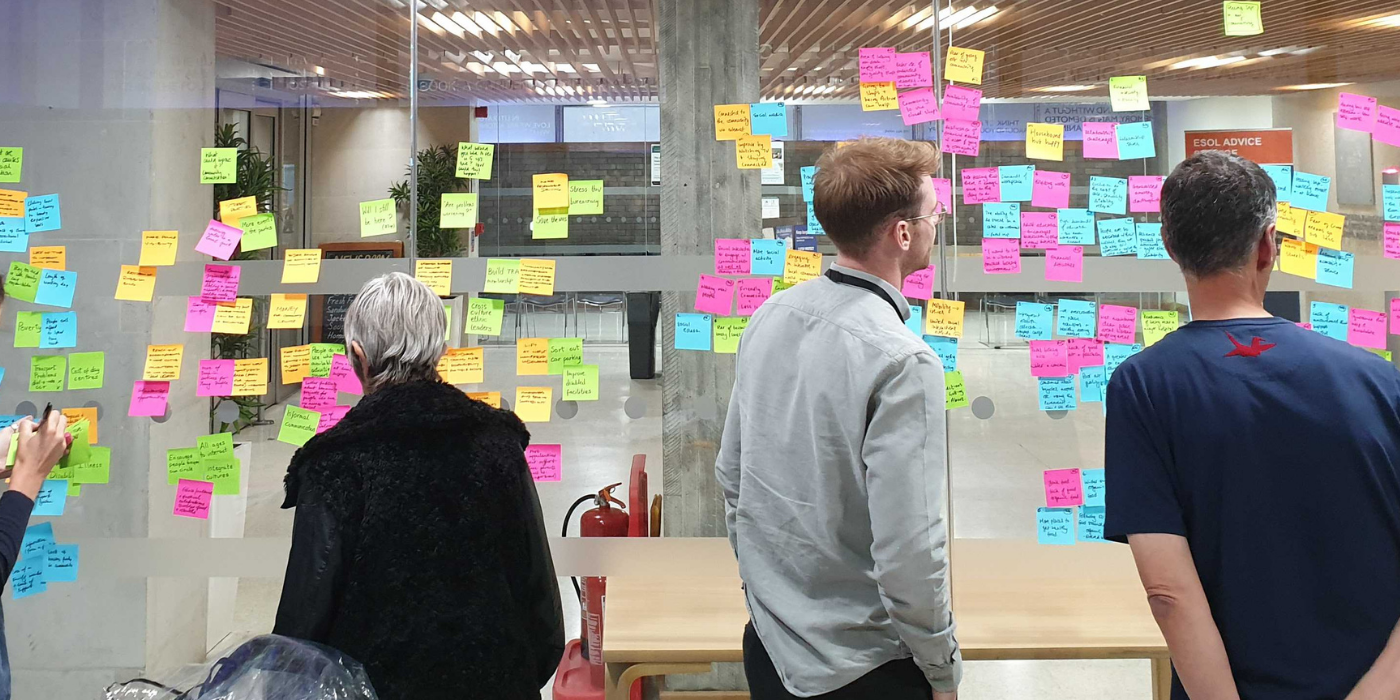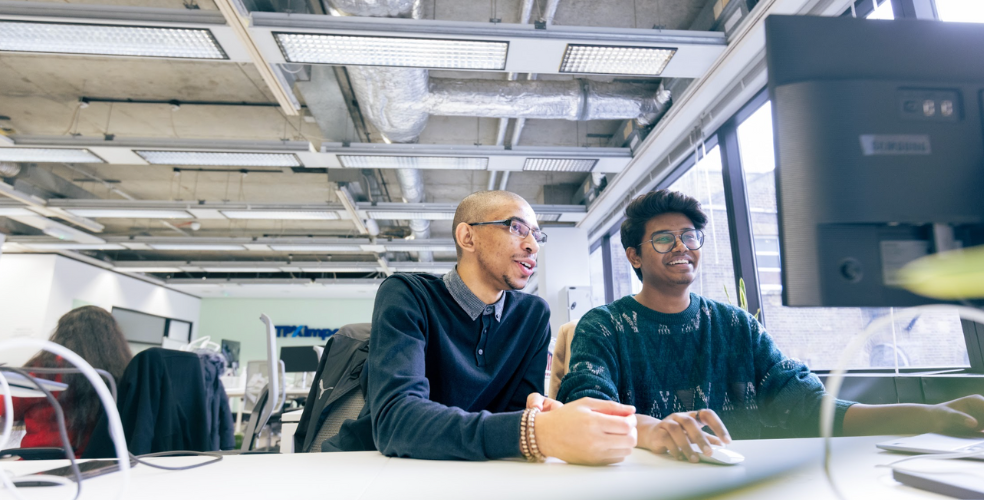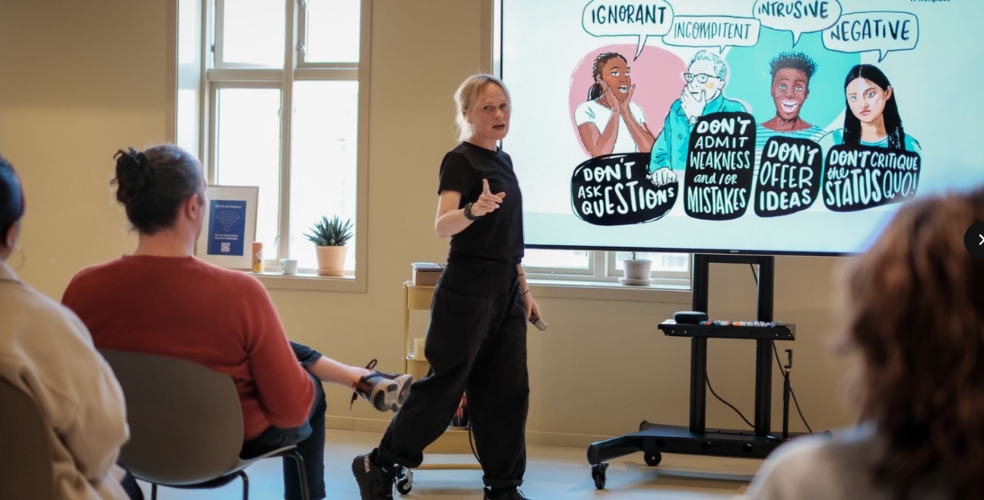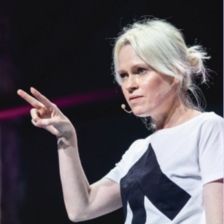"This was a great session, Tash Willcocks was clear, engaging and profound. Canoe created an open context for sharing and connecting, in relation to an important matter"Erik Lerdahl
Professor in Creativity and Service innovation and the founder of Coboost
This week in Stavanger, Norway, Canoe and TPXimpact teamed up across three events in two days:
- an Interaction Design Association (IxDA) meetup
- a ‘Connecting the Dots’ talkshop for 40 leaders from different fields and disciplines
- an internal team workshop for the Canoe team
We came together to explore what it really means to work well as humans.
The common thread through all three events? Psychological safety.
From service design at IxDA to feedback culture and conflict, the focus was on how we as collaborators and leaders can help create the conditions where people can speak up, disagree, engage in creative conflict, feedback, and through this help ideas, people and organisations thrive and grow.
Conflict isn’t a dirty word
Not all conflict is the same and that distinction shaped much of the deeper workshops. Together, participants unpacked the difference between personal conflict, which often feels emotional and high-stakes, and task-based conflict, where disagreement can actually lead to stronger outcomes. The sessions were rooted in the belief that surfacing tensions, when done well, is essential to team health.
This built on a recent blog post I wrote that pointed out not all conflict is the same, and challenged the reflex to avoid conflict altogether, as things like creative conflict and task based conflict are an important part of the job. Personal conflict needs handling with care, but, like difficult feedback, does need handling.
The Peter Bromberg quote shared in the talkshop expressed this well – “When we avoid difficult conversations, we trade short-term discomfort for long-term dysfunction.”
Feedback: not just for performance reviews
The sessions also explored the nuance of feedback, from sometimes easier-seeming praise giving, to the more uncomfortable truths. While complimentary feedback often flows freely, many admitted that even that has fallen away in hybrid and remote environments. Those spontaneous moments of encouragement have been lost in digital tunnels. A reminder to use those same digital channels to our advantage – like Slack to “praise publicly” hit home for many.
The group also reflected on why critical or growth feedback gets skipped. Drawing on Thanks for the Feedback by Stone & Heen, they explored the three types of feedback triggers:
- truth triggers – when feedback feels inaccurate or unfair
- relationship triggers – when the source of the feedback feels more personal than the content
- identity triggers – when feedback challenges self-perception
Understanding these reactions helped frame how both giving and receiving feedback can and needs to be done with more care, and more impact.
"Tash, or Lightning Tash as I will call her from now on, took us on a journey full of self-exploration and energy. Personally I must have grown several inches just through the workshop. Loved the insight, and all the practical takeaways"Rune Tandem
Professor of Leadership University of Stavanger Talkshop attendee
Tools to help us help ourselves
As mentioned, the morning session welcomed 40 leaders from a range of sectors, with the intention not to lecture, but to spark meaningful conversations and have some valuable experiential learning moments. Models like the content process, scarf model, and Johari Window helped frame how structure, team alignment, feedback, thoughtful personal story telling and self-reflection shape team dynamics, while Jonathan Haidt’s elephant and rider analogy offered a memorable way to explore the balance between the emotional elephant and rational rider during conflict.

Theory turned into theatre when participants were invited to act out a feedback scenario across different stages of Susan Wheelan’s Integrated Model of Group Development (IMGD). Whether teams were ‘forming’ or ‘storming’, the skits reflected real dynamics and drew on Lencioni’s triangle of dysfunction and the SCARF model to deepen the learning. With an open invitation to direct rather than perform, every team member still chose to step up, bringing both insight and laughter to the stage.
Vulnerability takes guts (and builds trust)
The afternoon zoomed in on the Canoe team. Building on the morning’s work, the group focused on feedback, storytelling, and stretch zones. Each person was invited to share a short personal story from a choice of three:
- a mistake they learned from
- feedback that shifted their thinking
- a tense moment that built trust
This wasn’t easy work, and the Canoe leaders were asked to go first to role model - which they did excellently, drawing up personal stories and sharing the feelings and learnings. The rest of the team followed suit and showed up with honesty, integrity and a lot of heart. Sharing these stories, raw, real, and reflective, in my opinion created powerful moments of connection. And importantly, it showed how vulnerability can build psychological safety from the inside out.
Three events, one goal
Across the two days, we didn’t just deliver learning, we created the conditions for it. From opening up about conflict, to stretching feedback muscles, these events were about more than professional development. They were spaces where people talked about the hard stuff, listened with empathy, and reminded each other what kind, brave collaboration really looks like.
Here’s to more of that and a huge huge thanks to those who came and learnt with us.
If you are interested in training from short masterclasses to internal academies to help build capability in your organisation please contact our Head of Learning Design via email - tash.willcocks@tpximpact.com
If you are interested in working with Canoe or using their beautiful space in Norway, contact them on hello@canoe.no
Our recent design blog posts
Transformation is for everyone. We love sharing our thoughts, approaches, learning and research all gained from the work we do.
-

-

Naming services in complex situations
Read blog post -

Using inclusive research approaches with Blood Cancer UK
Read blog post -

Designing for users who don’t exist (yet)
Read blog post

